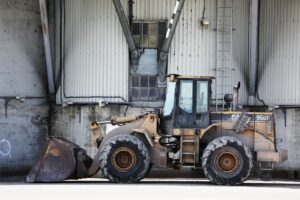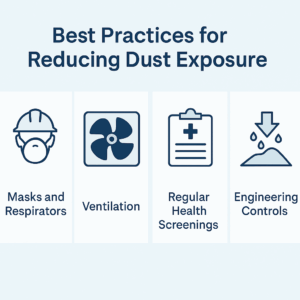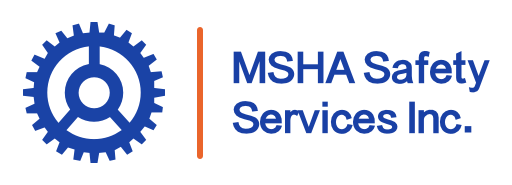Dust exposure in mining environments is a significant health risk that can have lasting impacts on workers. Understanding dust exposure risks is crucial for safeguarding the health of mine workers and ensuring a safe working environment.
What Are the Hazards of Dust in Mines?
Mining operations generate various types of dust, including silica, coal dust, and other particulate matter. Each type of dust poses a unique set of hazards. Monitoring dust exposure levels in mines is vital to protect workers from potential health risks.
Types of Dust in Mining Environments
In mining environments, various types of dust are generated. Here are some of the main types:
- Respirable Dust: Small particles that can be inhaled deeply into the lungs. Common sources include drilling, blasting, and crushing operations.
- Coal Dust: Specifically generated in coal mining, this dust can lead to respiratory diseases like pneumoconiosis, also known as “black lung disease.”
- Silica Dust: Produced from mining operations that disturb crystalline silica-containing materials. This dust can cause silicosis and other respiratory issues.
- Metal Dust: Generated from the extraction and processing of metals like copper, lead, and zinc. Exposure can lead to various health risks depending on the metal involved.
- Quarry Dust: Arising from stone quarrying, this dust consists of fine particles from crushed rock and can contain silica.
- Tailings Dust: Dust from the piles of waste materials left over after the extraction of minerals. This can contain various harmful substances depending on the processed ore.
- Organic Dust: In some mining operations, especially in tropical or wooded areas, dust may contain plant material, which can also pose health risks.
Regulatory Standards for Safe Dust Exposure
Regulatory agencies, such as the Mine Safety and Health Administration (MSHA) and Occupational Safety and Health Administration (OSHA), set workplace standards to ensure that working conditions are safe for all workers. For example, MSHA (the governing body over all mining environments) establishes regulations for conditions such as dust exposure levels to ensure they remain within safe limits for mine sites. Regular monitoring and compliance with these standards and others are essential to protect workers.
It’s important for mine operators to stay updated on these rules and regulations because these governing bodies update regulations often and any workplace found in violation could be heavily fined. Let’s take a recent regulatory change as an example: exposure limits have been tightened for respirable crystalline silica. These new exposure limits pose a financial threat to mine operators who fail to meet the updated reporting standards and the dust itself poses a threat to those breathing it in day after day. Workers and operators could benefit by being informed about the risks associated with their workplace environments and the importance of adhering to safety regulations.

Health Risks Associated with Prolonged Exposure
Prolonged exposure to dust can lead to serious health conditions, including:
- Silicosis: A lung disease caused by inhaling fine silica dust.
- Coal Workers’ Pneumoconiosis: Also known as “black lung disease,” resulting from coal dust exposure.
How Does Dust Exposure Impact Your Health?
Dust exposure can be harmful in both the short and long term.
Short-Term Effects of Inhaling Dust
- Irritation of the eyes, nose, and throat.
- Coughing and sneezing.
Long-Term Effects and Associated Risks
Chronic exposure can result in severe respiratory diseases:
- Silicosis: Develops from long-term silica exposure.
- Pneumoconiosis: Caused by inhaling various types of dust, leading to lung damage.
- Chronic Obstructive Pulmonary Disease (COPD): A progressive disease that makes it hard to breathe.
Can Dust Collect in Your Lungs?
Dust particles can enter the lungs when inhaled. Once inside, some particles can settle in the respiratory system, leading to various health issues. The body’s natural defense mechanisms, such as mucus and cilia, attempt to expel these particles, but they may not always succeed, especially with prolonged exposure.
What Are the Symptoms of Dust Exposure?
Recognizing the symptoms of dust exposure is crucial for early intervention. Common symptoms include:
Early Warning Signs
- Mild coughing
- Shortness of breath during exertion
Chronic Symptoms of Prolonged Exposure
- Persistent coughing
- Difficulty breathing
- Lung damage
Conditions like pneumoconiosis and silicosis often have delayed symptoms, making early detection challenging.
How Do You Treat Dust Exposure?
Immediate Actions to Take if Exposed
If a worker is exposed to high dust levels, they should:
- Move to an area with fresh air.
- Seek medical attention if symptoms persist.
Medical Treatments Available for Chronic Dust Exposure
Treatment options may include:
- Medications to manage symptoms.
- Pulmonary rehabilitation programs.
Preventative Measures to Reduce Dust Inhalation
Employers should implement measures such as:
- Providing personal protective equipment (PPE).
- Improving ventilation systems in the workplace.
How Can You Clear Your Lungs of Dust?
The body has mechanisms to clear dust, including:
- Mucus production.
- Coughing.
- Severe cases may require medical intervention, such as:
- Chest physiotherapy.
- Inhaled medications to open airways.
- Pulmonary rehabilitation can help improve lung function and overall health in individuals with dust-related lung diseases.
Preventing Dust Exposure in Mines

Employers should prioritize safety by implementing best practices:
- Masks and Respirators: Ensure that workers wear appropriate PPE.
- Ventilation: Maintain adequate airflow to dilute dust concentrations.
- Regular Health Screenings: Monitor worker health to catch issues early.
- Engineering Controls: Investing in dust suppression systems can significantly reduce dust levels and enhance worker safety.
Be Vigilant at Regulating Dust Exposure From Mines
Dust exposure in mining environments presents serious health risks that require vigilant monitoring and preventive measures. By understanding the dangers and implementing effective protection strategies, mine operators can create safer workplaces. For more information on dust exposure regulations and health support, consider consulting with an expert industrial hygienist or bring in a third-party consultant who can help you assess your risk levels.

